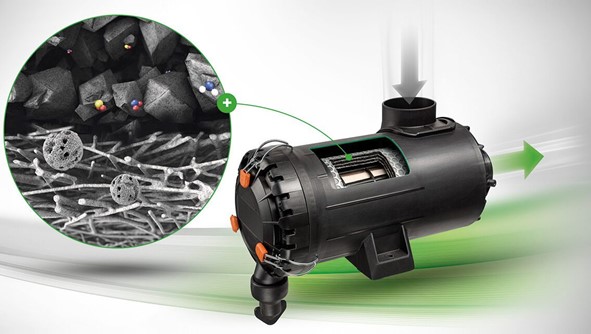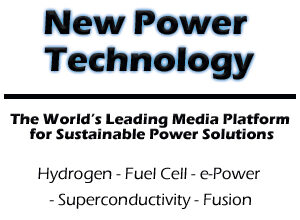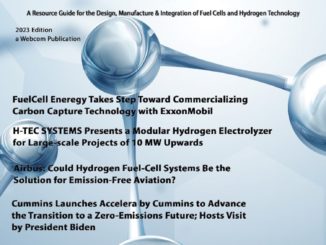
Getting rid of contaminants in cathode air is the problem. With research studies in Germany and a prototype that will be tested in China, Mann+Hummel is leading a consortium seeking to develop an air filter system that will prolong the life of fuel cells for commercial vehicles. Advanced air filtration sensor technology is seen as an important tool in improving the performance/lifetime ratio of fuel cell systems and the company has its sights set on the Chinese market particularly.
“The lifetime of a PEM fuel cell is affected by conditions such as the cleanliness of the cathode air in the catalyst,” explains Dr. Michael Harenbrock, principal expert for electric mobility at Mann+Hummel, headquartered in Ludswigberg, Germany north of Stuttgart. “Oxygen is reduced in the platinum-coated cathode but gases containing nitrogen or sulphur bond to the platinum particles. This causes them to block the catalyst, which impairs the performance of the fuel cell.”
Activated carbon filters specifically adapted to these types of harmful gases offer effective protection as they selectively absorb them but they only have limited storage capacity. “We do not yet have empirical values for the recommended time intervals for filter changes in fuel cells to the same extent as we are used to with combustion engines as the technology is still extremely new,” says Harenbrock. “It therefore remains difficult to predict the lifetime of a filter while we still do not know the quantity of harmful gases that the filter will have to contend with in real-life operation. Field trials in Germany have shown that this is heavily dependent on the traffic environment in which the vehicle is being driven.”
Now, the ISAAC project seeks to develop of a sensor array for cathode air cleaner systems that absorb harmful gases as part of a German and Chinese partnership. In order to facilitate usage-based maintenance, Mann+Hummel is working with two other partners as part of a consortium to develop a sensor array for the cathode path. This will indicate when the activated carbon used has become saturated and harmful gases are beginning to penetrate the filter. As part of the project, the Duisburg-based Institute for Energy and Environmental Technology is developing a penetration sensor array based on gas-sensitive surfaces for use in automobiles in changing environmental conditions and a smart signal processing system adapted to this.
The sensor layers, which will react sensitively and selectively to selected harmful gases and mixtures of harmful gases, are being supplied by the Research Institute for Precious Metals & Metal Chemistry in Germany. “In addition to developing cathode air cleaner media specifically adapted to the profiles of harmful gases, at Mann+Hummel we are focusing on integrating the array into the cathode air path,” says Harenbrock. “At the end of this process, we will have a prototype, which will need to be made ready for series production.”
Fuel cell systems for commercial vehicles are the likely application target. “The lifetime requirements are much higher for commercial vehicles than in the passenger car sector,” explains Harenbrock. “As this type of drive technology has to compete with combustion engines, the overall costs need to be financially viable. The sensor measuring technology required here, which is already capable of reliably identifying very low concentrations of gases, is currently mainly used in test benches. It is too expensive to use in vehicles. The aim of our project is to reduce the costs for the sensors while simultaneously increasing the fuel cell lifetime to enable consistent performance for as long as possible through predictive maintenance and by changing the filter at the right point.”
The work in Germany, supported by federal funding, is closely linked with a sister project in China that is being supported by the Chinese Ministry of Science & Technology. The partners on the Chinese side are Tongji University in Shanghai, Mann+Hummel China and an OEM partner for field trials.
“The differences in air quality mean that, in order to design the filter elements, we first need the relevant data from China,” says Harenbrock. “Finally, the prototype we have developed will be tested locally in China. The Chinese sales market is extremely interesting as there is currently a lot of support there for expanding the hydrogen strategy in the commercial vehicles sector.”
For more info, see www.mann-hummel.com.



